Estimated reading time 18 minutes, 41 seconds.
It was little more than a bullet point in a slide deck, one of many emphasizing the main points in a force development program for the Royal Canadian Air Force (RCAF) over the coming years: “Be interoperable/interchangeable with key allies.”
Systems interoperability with NORAD, Five Eyes, and NATO partners has long been a core objective of the RCAF, especially as the seamless sharing of vital sensor data has become critical to coalition operations.
Interchangeability is a more recent goal among NATO allies, spurred in part by the number of weapon systems donated to Ukraine that, despite NATO standardization agreements, have not always had compatible ammunition.
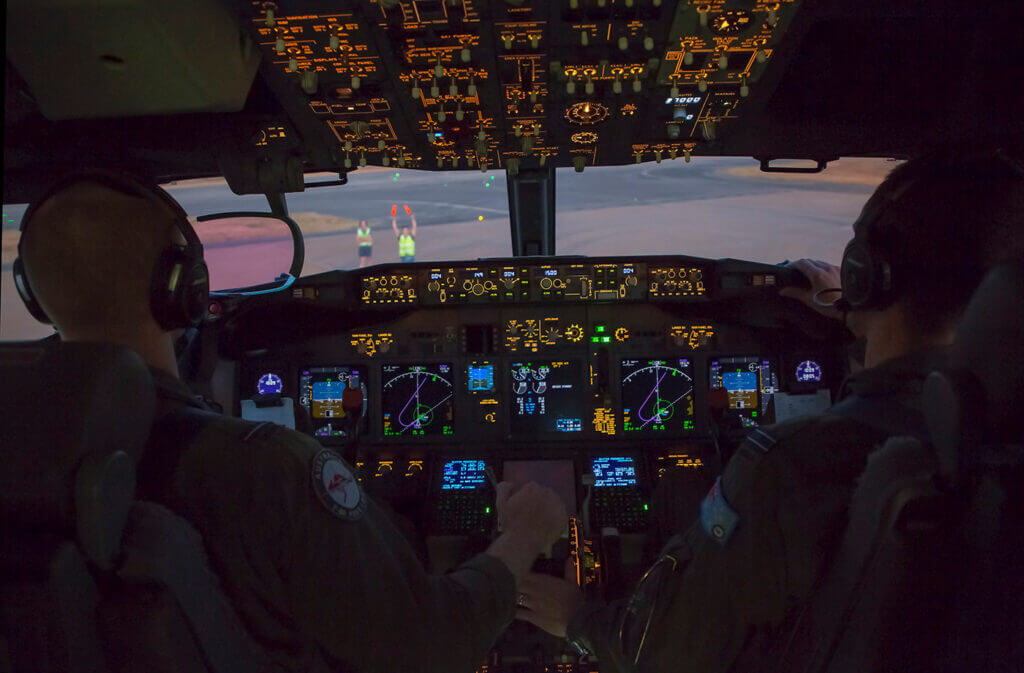
The term first appeared in RCAF public discussions in April, during presentations to the Canadian Association of Defence and Security Industries, and has since become a recurring theme. In addition to long-term force development, interchangeability was listed as a growing concern in capability sustainment and contested logistics supply chains, where “bespoke solutions will be increasingly difficult to support,” according to one slide.
While the term is not well defined, lacks maturity, and is open to a wide range of interpretation — depending on the user and the audience — “it is potentially pretty consequential,” said David Perry, a leading observer of defense procurement and the president and senior analyst of the Canadian Global Affairs Institute (CGAI).
“Depending on how it gets operationalized,” and if it indicates a significant shift from employing common capabilities to acquiring identical platforms and equipment, “it will circumscribe a whole lot of options and effectively be dictating procurement strategies,” noted Perry. “That’s got pretty profound implications.”
As the RCAF weighs options for the next Canadian Multi-Mission Aircraft (CMMA), a project to replace the CP-140 Aurora submarine hunter and maritime patrol and overland intelligence gathering platform, interchangeability has surfaced as a potential necessity along with the Air Force’s 13 high-level mandatory requirements.
Russia’s resurgent submarine presence in the Atlantic has reached levels not seen in recent years, according to NATO, and China now boasts a fleet of over 70 modern submarines that continues to grow. To counter such threats, “a focus on true interoperability, almost to the point of interchangeability, is necessary with our partner nations,” MGen Iain Huddleston, commander of 1 Canadian Air Division and Canadian NORAD Region, told a CGAI conference on the future of anti-submarine warfare (ASW) in mid-June.
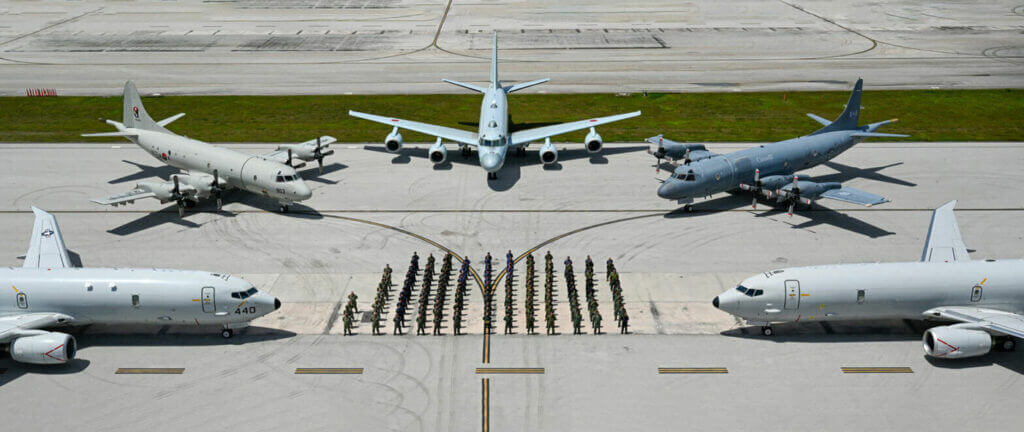
“We have to be plug and play — one allied asset replacing another allied asset in this ASW fight,” he said. “Effectively, we’re looking to be able to place one of our assets into a NATO mission or a combined or joint mission seamlessly . . . without any question as to its capability, capacity, or alignment with allied procedures.”
Economic impact
The CMMA project has taken on some urgency — and a more visible public profile — since the federal government issued a request for information (RFI) from the defense and aerospace industry in February 2022. That process determined that the Boeing-built P-8A Poseidon is “the only currently available aircraft that meets all of the [RCAF] operational requirements,” Public Services and Procurement Canada stated in a press release in March 2023. That release also announced that Canada had sent a letter of request to the U.S. government for the purchase price of 16 P-8 aircraft.
In late June, the U.S. State Department approved the possible foreign military sale of the maritime patrol aircraft, as well as various sensors and onboard systems, spares, and technical and training support, for an estimated US$5.9 billion.
Originally scheduled to enter the definition phase of the government defense procurement process in 2025, and achieve initial operating capability (IOC) in 2034 and full operational capability (FOC) by 2040, the CMMA project is now starting definition this year and is on course to reach IOC by 2032 and FOC by 2037.
The faster timetable is being driven in part by the age of the CP-140, a variant of the Lockheed Martin P-3 Orion. Although all 14 of the Auroras are completing the fourth and final block of a 20-year incremental modernization project that has significantly enhanced the mission capability of the platform, the airframe is now over 40 years old.
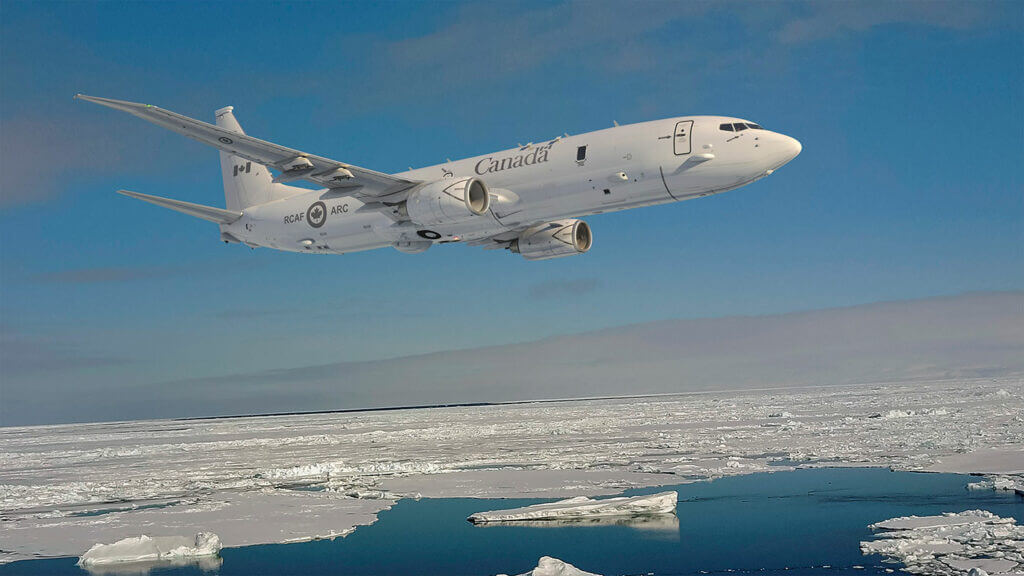
The CP-140 was acquired in the early 1980s to replace the CP-107 Argus, but legacy systems have challenged the performance of newer mission systems. For example, on Exercise Sea Dragon in the western Pacific Ocean in March, extreme temperatures overwhelmed the aircraft’s air conditioning, which then affected the mission computers.
Boeing has also flagged the potential closure of the P-8 production line sometime in the 2020s, depending on aircraft orders. The P-8A is a purpose-built military variant of the Boeing 737 Next Generation commercial airliner.
While the government has deemed the P-8A as the only fit at present for the CMMA project, Montreal-based Bombardier has challenged that claim, arguing it could deliver cutting-edge ASW capability on a new Canadian-built special mission variant of the Global 6500, if the government holds a “fair competition.”
In May, Bombardier announced a partnership with General Dynamics Mission Systems Canada, the current provider of integrated ASW mission systems on the Aurora, CH-148 Cyclone maritime helicopter, and the Royal Canadian Navy’s Halifax-class frigates. The companies asserted at a press conference in June — where a mock-up of the proposed aircraft was unveiled — that a plane built primarily in Toronto and then assembled in Montreal would “generate thousands of jobs in Canada.”
The companies also questioned the wisdom of a multi-billion-dollar investment in a platform based on a 1970s design. The Global 6500 “burns 30 percent less fuel than its closest competitor,” Jean-Christophe Gallagher, Bombardier’s executive VP for aircraft sales and defense, told CBC. “It flies higher, it flies faster, it stays longer on target.” However, a militarized Global 6500 that includes mission equipment, weapons bay, wing pylons, and weapons would suffer a speed, range, altitude, and fuel burn reduction when compared to the current business jet configuration.

A PricewaterhouseCoopers report released in mid-July concluded that selecting the Global 6500 platform for the CMMA project would generate an economic footprint of about C$2.8 billion in GDP, 22,650 full-time equivalent jobs, and C$1.8 billion in labor income — if the 16 aircraft were designed, manufactured, upgraded, and maintained along with the ASW mission capability — over the contract period. However, the report does not state over what period of time the economic footprint extends.
Boeing has countered with its own numbers. At a press event in late May prior to Canada’s largest defense and security tradeshow, known as CANSEC, the company shared the findings of a Doyletech study that claimed a CMMA contract award would add $357 million per year to Canada’s GDP over the first 10 years of the contract and generate on average 2,923 jobs per year during that timeframe.
The same study pegged Boeing’s current annual economic impact in Canada at over $4 billion, despite several years of Covid-19 restrictions and reduced activity across the aerospace sector GDP, with the company supporting around 14,000 jobs among more than 550 Tier 1 and sub tier suppliers.
Canadian companies currently supply parts for all of Boeing’s 7-series jetliners, noted Neil Knudsen of Doyletech, and increased access to Boeing’s global supply chain for more small- and medium-sized businesses would expose them “to new business opportunities, new technologies, new markets, cutting-edge processes, and quality innovations.”
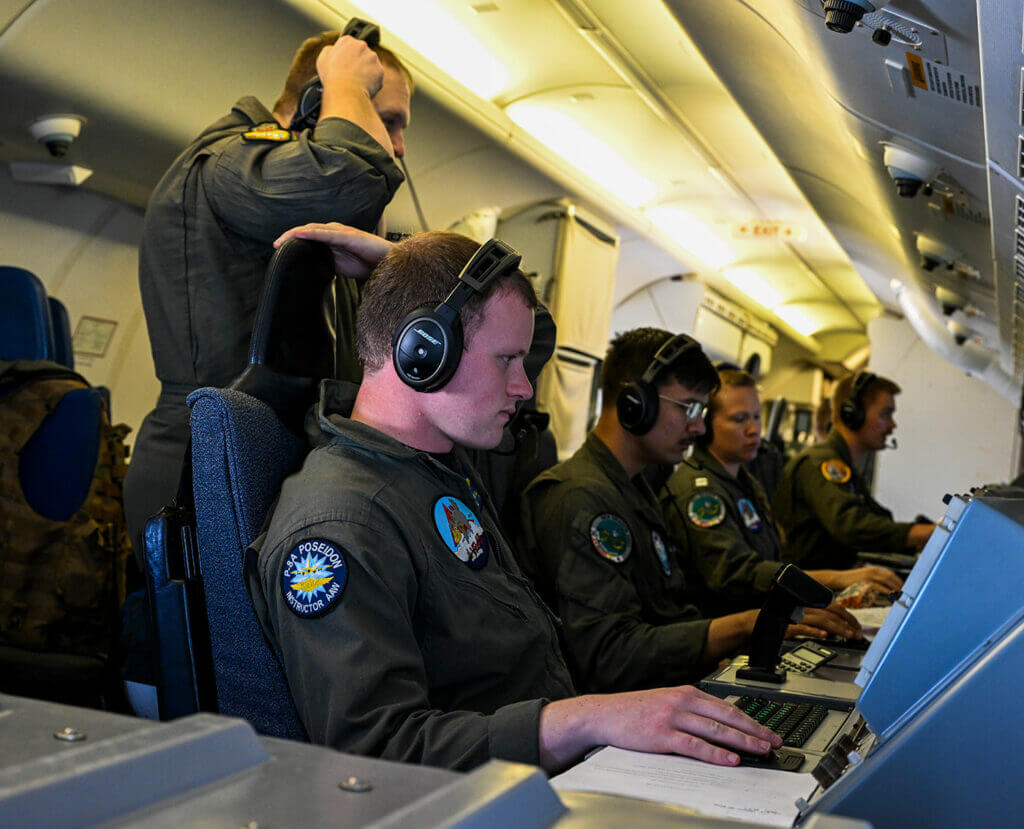
Boeing is investing in R&D around emerging technology such as advanced air mobility, sustainable fuels, and electrified aircraft, and has or is launching centers of excellence in areas such as smart digital learning, added Knudsen.
While the economic argument is a key political consideration in defense contracts — the economic return to Canada through industrial and technological benefits can exceed 10 percent of the bid evaluation — interoperability with allies and ease of entry into service are important concerns for the Air Force.
In fact, Huddleston’s aim of near seamless integration in ASW could imply that “if meaningful numbers of our allies are operating the same pieces of gear, we’d be demonstrating a preference for buying into that same pool,” said Perry.
Boeing has emphasized interchangeability in its pitch to Canada. Not only is the P-8A operated by, or in production for, the other Five Eyes partners (Australia, New Zealand, the United Kingdom, and the United States) as well as India, Norway, Germany, and South Korea, it also shares 86 percent commonality with the commercial 737NG aircraft. There are 4,000 737NGs in service today, over 100 of which are with Canadian airlines.
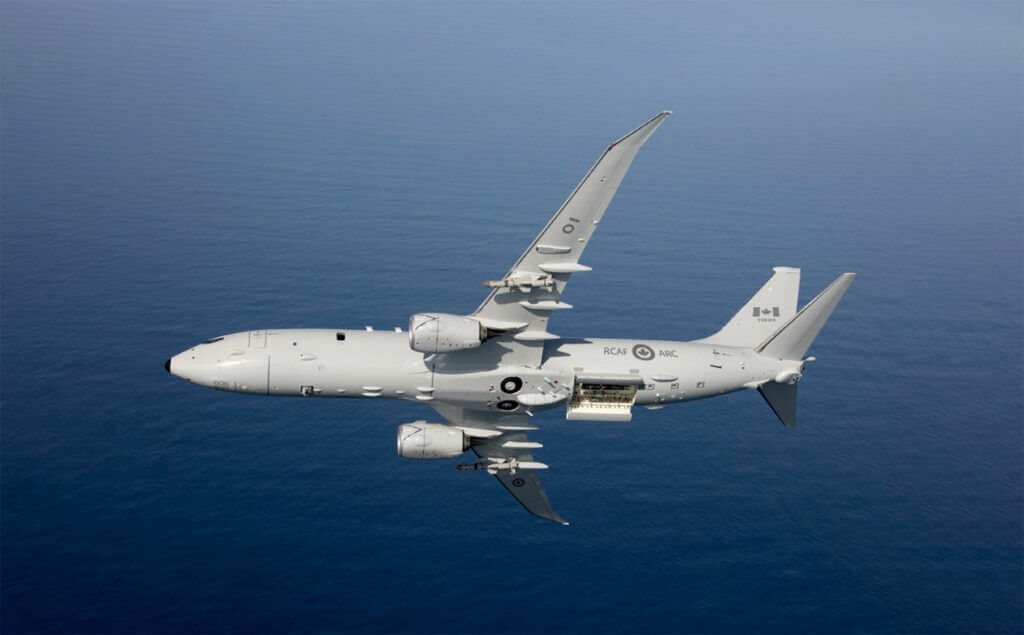
“One of our key lessons from the war in Ukraine is that supply chains are easily disrupted on the modern battlefield by long-range fires. So allied interoperability is no longer enough,” Ted Colbert, president and CEO of Boeing Defense, Space and Security, told the pre-CANSEC event. “The new logistics paradigm is interchangeability, and the P-8 offers guaranteed interchangeability with the eight other allied partners who require it.
“From a national security perspective, the real advantage with the P-8 is the information Canada will exchange with allied nations in real time — something you can’t find in any other aircraft of its type,” added Colbert.
Mitigating risks
If interchangeability is an emerging longer-term objective, a smooth entry into service is likely the more immediate priority. Recent history with the CH-148 Cyclone and ongoing issues with the CC-295 Kingfisher fixed-wing search-and-rescue aircraft are stark reminders of how problematic it can be to get a new aircraft through the lengthy certification process and declared airworthy, especially when it has undergone extensive modifications to militarize a civilian platform.
Bombardier has delivered hundreds of specialized business jets to operators worldwide and modified several Global aircraft as special mission variants, including the Saab GlobalEye based on a Global 6000 and the PAL Aircraft Services P-6 maritime patrol aircraft based on a Global 6500. Aerospace commentators, however, have noted the certification challenges and costs Bombardier could incur converting a Global 6500 to meet the CMMA requirements.
With over 160 P-8s now in service, Boeing, too, is highlighting the risks associated with certification.
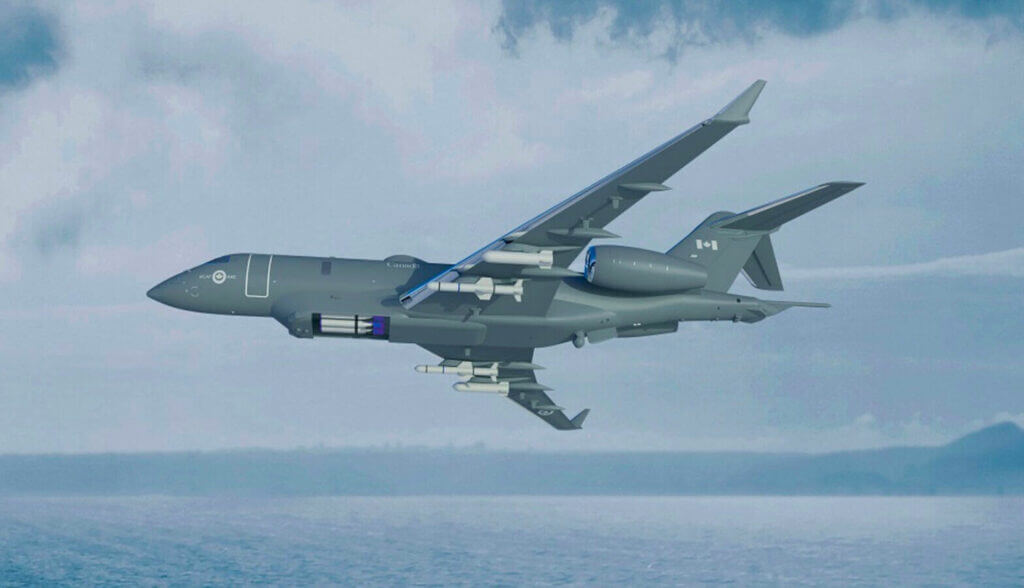
“[The P-8A], by the fact that it has more than 500,000 flight hours and has been certified by the U.S. Navy, and also by international operators — for example, the [European Union Aviation Safety Agency] has certified the aircraft — should give Canada a high degree of confidence that there won’t be certification issues for entry into service,” said Sean Liedman, Boeing’s director of international business development for mobility and surveillance aircraft.
Further, the U.S. Navy and Australia, which joined the Poseidon program almost at the outset, have invested C$8 billion over the nine years from selection to IOC, he noted. “I think that that would be a blueprint for any other developmental effort going forward. To solve those engineering challenges takes time and money, it is just a simple fact of aerospace engineering and physics.”
To replace the CP-140 fleet within the current timeline of the early to mid-2030s “is not a window big enough to support a development program,” said Colbert.
In selecting its team of Canadian partners for the P-8 (CAE, GE Aviation Canada, IMP Aerospace & Defence, KF Aerospace, Honeywell Aerospace Canada, and Raytheon Canada, among others), Boeing consciously sought ways to mitigate some of the risks of certification.
“Certification is an enduring process over the life of a platform,” said Liedman, “so that’s why we needed Canadian industry partners who could provide those continuing airworthiness services going forward.”

“Bringing a new aircraft to market is lengthy, expensive, and poses many risks,” noted Terry Manion, vice president and general manager of Raytheon Canada, which will likely provide supply chain coordination and possibly radar support to the P-8A. “Boeing created Team Poseidon to capitalize on Canadian industry partner capabilities and deliver long-term economic prosperity to Canada.”
KF Aerospace’s director of business development, Bryan Ackerstream, a former RCAF logistics officer who worked with the U.S. Air Force on in-service support optimization, believes the path to getting the P-8 on the operational line is relatively short.
KF Aero has a lengthy history of converting Boeing 737-800s to cargo freighters and has completed avionics, winglet, and other structural modifications to the airframe, as well as heavy maintenance checks — making it an ideal in-service support provider. Altering the structure of a civilian aircraft to incorporate such requirements as a torpedo bay would be time-intensive and expensive, he suggested.
“There is a reason that platform is the most sought after narrowbody freighter in the world,” noted Ackerstream. “The slots for converting 737 passenger to 737 cargo are full. Boeing has a history of developing and certifying these robust airframes that work in the freighter world.”
Gregg Evjen, KF Aero’s chief operations officer, added: “We’ve all witnessed the effects that certification risks and resource shortages can have on a new design program, and how long these delays can last. With the P-8, Canada will receive a fully operational platform with an existing pedigree and a very experienced Canadian team to help execute and sustain the program.”
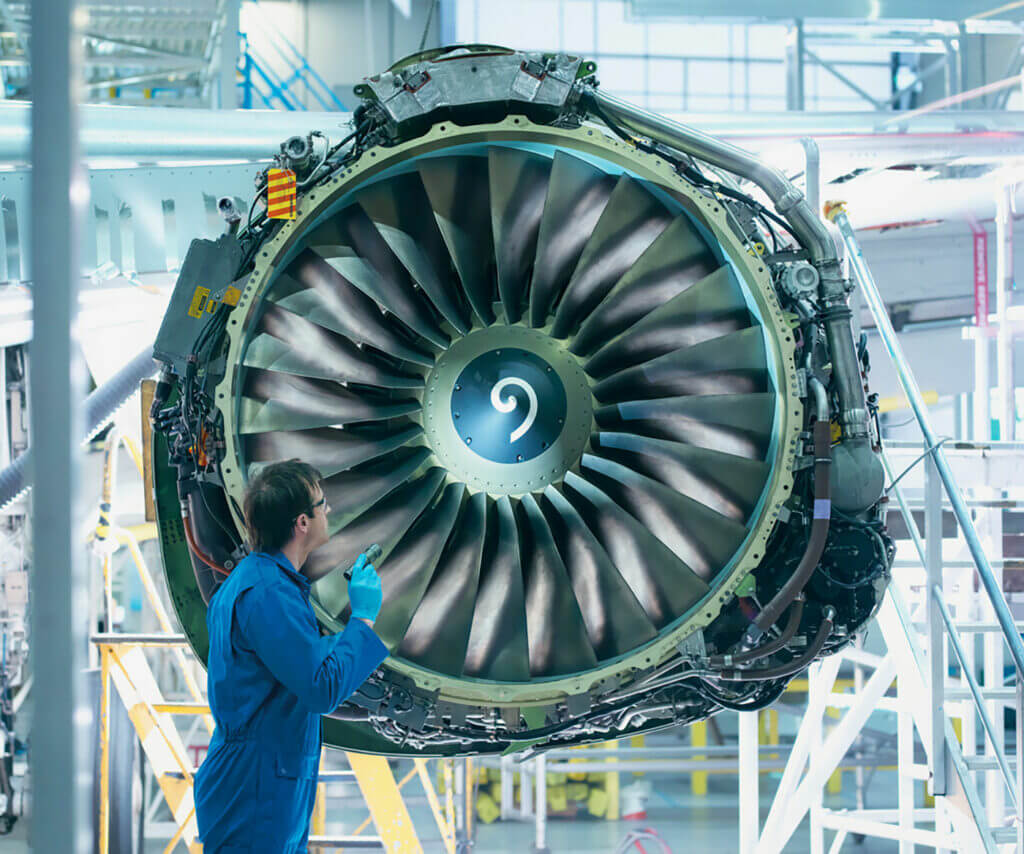
With IMP Aerospace, Boeing brought in the current prime contractor on the Aurora Incremental Modernization Program and a center of excellence in ASW for both fixed- and rotary-wing aircraft, Liedman noted.
“It’s going to be an enduring requirement to sustain that capability for the P-8 as well.”
Likewise, with the CFM56-7B27 engines, “in terms of risk – technical and financial – this is the best solution by far,” said Daniel Verreault, director of military systems operations in Canada for GE Aviation, which “has manufactured almost 18,000 of these engines” from its facility in Bromont, Quebec. With more than 500 million flight hours across several military and commercial Boeing fleets, “it is a proven platform,” he said.
“The CFM56 is an excellent engine with many millions of hours flown – proving its quality and reliability,” added Marc Drobny, president of StandardAero’s military, helicopters and energy division, which provides MRO services for the CFM56 engines. “The P-8 meets all the mission requirements as stated by the [RCAF].”
Since North American economic security is dependent on stable patterns of global maritime trade, the CMMA project represents a critical decision for the federal government, suggested France Hébert, CAE Canada’s vice president and general manager of defense and security. CAE has provided operational flight trainers to all six of the current P-8 nations and would deliver training solutions for the RCAF.
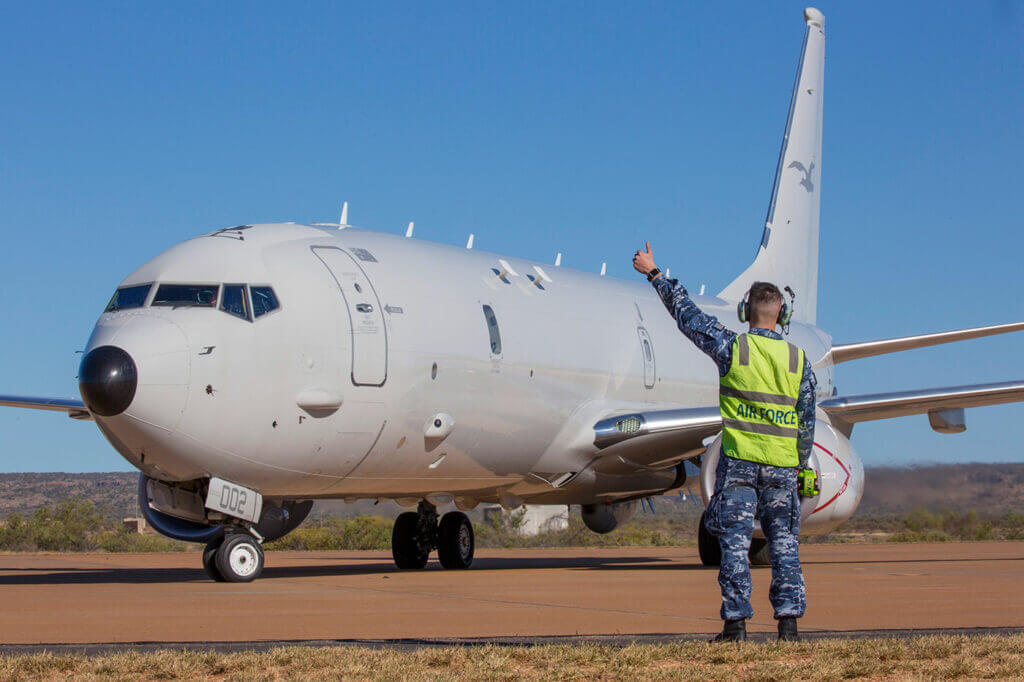
“There is no country in the world that is building more surface vessels and submarines than China which, according to the Office of Naval Intelligence, is on track to achieve a fleet size of over 425 vessels by 2030. What this tells me is that the CMMA program could not happen fast enough,” she told Boeing’s pre-CANSEC event.
“Should Canada advance with this platform, it is my view that CMMA will emerge as one of the key Canadian national security contributions to stability in the Indo-Pacific region. It will also represent a tangible policy instrument for the government as it executes its recently released Indo-Pacific Strategy and seeks to raise the profile of Canada, amongst our friends and allies in the region.”
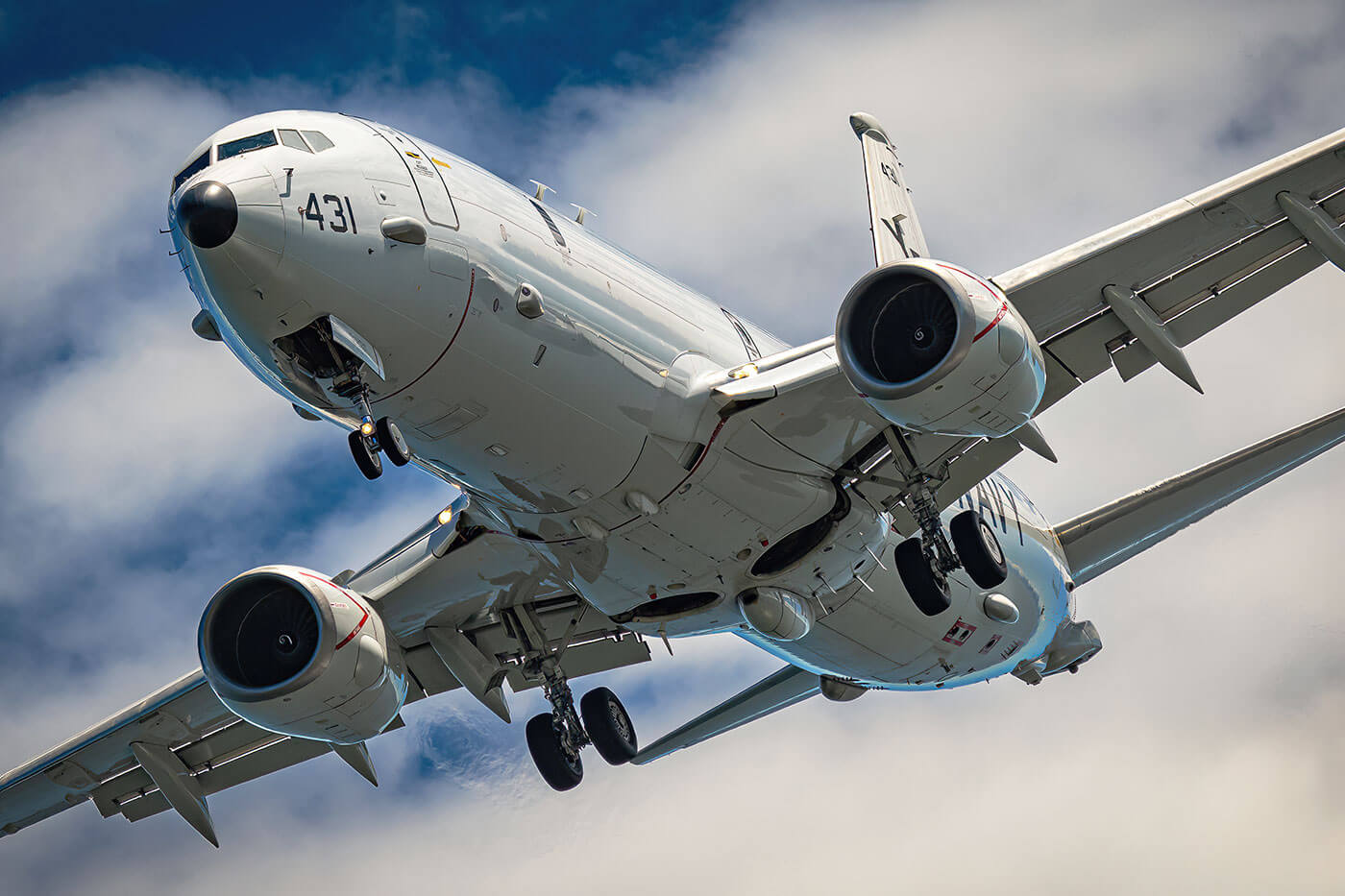

Sad that Boeing has to use threats of an impending end to the production of 737 aircraft in order to force sales of the p-8. Says it all…..
I don’t think that a threat of an impending end to a production line “says it all…” other than the aircraft is proven and that pretty well all the markets have been switched over to this aircraft already! NATO is heavily involved in this aircraft already. It is a small market compared to the civilian version and it has been saturated already.
There’s only 1 choice here, it’s the P8. Forget Bombardiers request let them build something else for the military.
Couldn’t agree more. Lets get on with the P8. Hopefully Parliament (and the Canadian military) will not f__k this military purchase up like so many others.
Time for Canada to develop industries and its’ own solutions. In the long term nothing will beat home grown talent and expertise which will have ramifications in the whole economy, military and civil.
Considering Canada’s past record at acquiring a Canada specific aircraft eg. the Cyclone & Kingfisher, the RCAF is far better off purchasing off the shelf P-8’s that will be delivered on time and on budget.
Couldn’t agree more. One of the successes was the purchase of the C-17
Having flown the Cp-140 Aurora for over 16 years, being able to fly to any USN P-3 base for Ops, servicing, parts and repairs certainly enhanced our mission capability and interoperability. Not selecting the P-8 would be a huge mistake for Canada. You don’t want to be the 1-off orphan in the game.
No offense to the bombardier 6500 offering except that it would not be very useful for ASW if it cannot carry multiple mk 48 or equivalent torpedoes
Mk 48 is a heavyweight torpedo, fired from submarines. The P-8 will carry the Mk 54 lightweight torpedo. Canada is in the process of upgrading to this weapon.
Hopefully the RCAF’s new CP-8s will also carry an anti-ship/land attack weapon. Would be nice to see the Naval Strike Missile integrated.
Glad that Canada went for the low-risk, interchangeable solution to CMMA.
Well I’m speechless. Can you believe this government has finally for the second time in four months (CC-330 Husky and now the P-8A) made the correct and timely decision to procure the best choice of aircraft for operational and not political decisions? Thankfully Bombardier’s lobbying of their paper airplane was seen for what it is, pandering once again to the feds like pigs to the trough with theoretical capabilities that will not materialize for another decade at best. Had Canada gone ahead with it we would be operating another (Cyclone & Kingfisher) niche / orphan aircraft with limited logistics support and likely inferior capability when compared to the P-8 at that time. Bombardier is doing just fine with their Global Series. Time to stay in their lane.